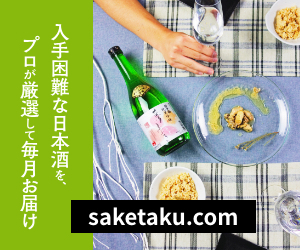- Home
- Report of Delicious Sake Serving Restaurants, My Three Meals, tokyo, chiyoda, Tasting & Comparing Sake
- Sake tasting at “Seiryu” run by a sake brewery – Kanda
Sake tasting at “Seiryu” run by a sake brewery – Kanda
- 2019/9/14
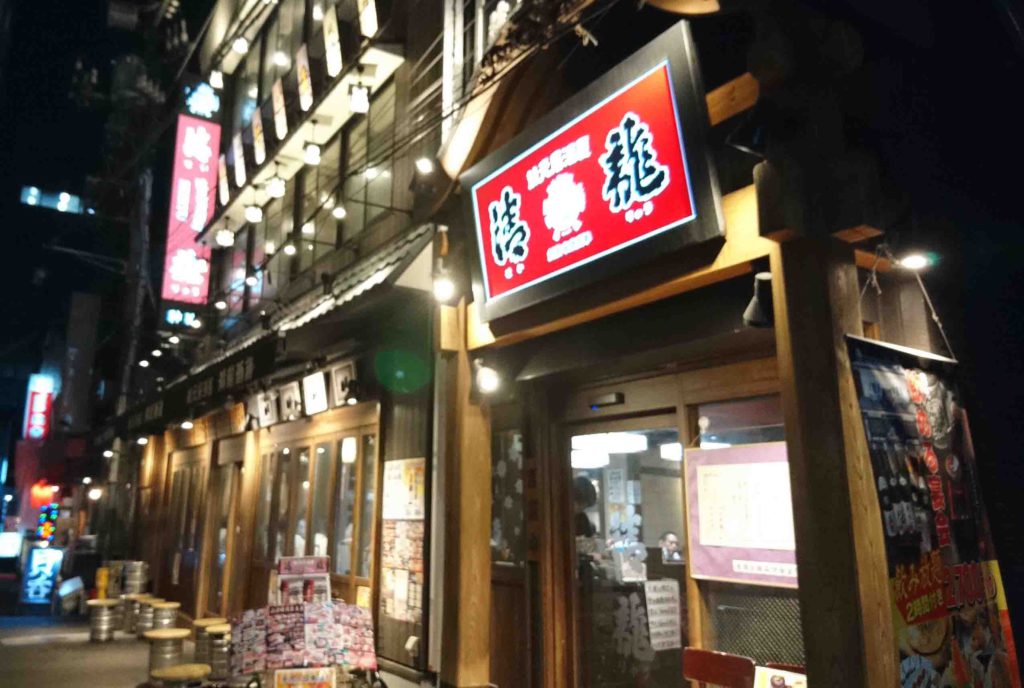
Good evening!
Thank you very much for visiting this blog!
Today I’d like to report a restaurant in Kanda, “Kuramoto Izakaya Seiryu”.
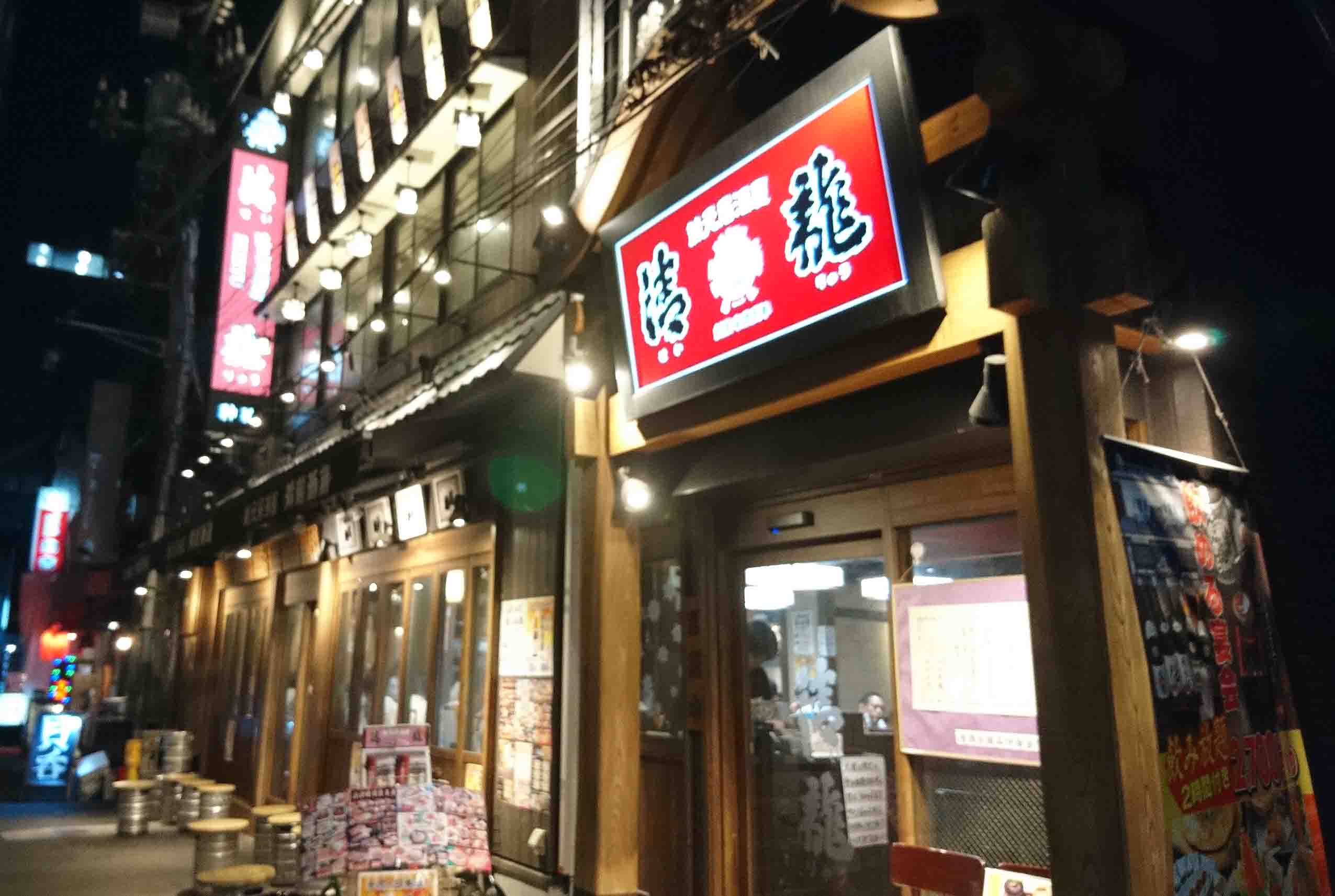
Contents
Kuramoto Izakaya Seiryu
The day was a Friday in early September.
I was going drinking with my university friend living in Kanazawa and who came to Tokyo for business.
When I think about places in Tokyo, I usually see the place with the nearest station.
My friend told me that he booked “a hotel in Nihonbashi” with a picture by mobile phone, so I understood that “he booked a hotel near Nihombashi Station”.
Therefore, I planned to take him to “Fujiro”, which is a restaurant near the station and I introduced on this blog before, because it would be nice for him who was working as a sales for developing restaurants and interested in shop design.
I made an appointment to see him at a bookstore in Nihonbashi.
I waited for him browsing books in the shop, and suddenly, I felt something about the picture which my friend sent me.
I checked it again, and I found that it was the reservation note of the hotel.
I looked at it carefully and noticed that it was NOT “a hotel near Nihonbashi Station”, but “a hotel in Nihonbashi Bakuro-cho”.
“Nihonbashi Bakuro-cho” is different from “Nihonbashi”!
Well, people who usually don’t come to Nihonbashi might think that an address which has letters of “Nihonbashi” is a part of “Nihonbashi”.
I, as well as those people, have experienced this kind of misunderstanding when I was living in Gunma Prefecture (when there was no internet services).
I wanted to go to “Kanda antiquarian bookshop area” in “Kanda Jinbo-cho”(the nearest station is “Jinbo-cho”), but I couldn’t reach there at all because I was walking around “Kanda Station”.
For Akihabara as well, the most famous spot which people think of about Akihabara is actually “Soto Kanda”, and the “real” Akihabara (in the point of the written address) is a little far to the north from Akihabara Station, and it’s rather the east side of Suehiro-cho Station on Ginza Line.
This is very complicated for people who are not familiar with Tokyo.
So, we changed the place to Kanda, which is not so far from the hotel in Nihonbashi Bakuro-cho.
We visited the restaurant which I had found before while I was searching for good places for the data correction for this website.
I wanted to go there because it looked interesting to write about.
The name of the restaurant is “Kuramoto Izakaya Seiryu” (Oh, it’s been a long introduction^^;).
As the name “Kuramoto” (= Sake brewery) says, this Izakaya restaurant is run by “Seiryu Shuzo” which is a sake brewery in Hasuda City, Saitama Prefecture.
The restaurant has 3 floors; the first floor and the second are for table seats, and the third floor has some private rooms.
The time we arrived was about half passed seven.
The table seats on the first and the second floors were full, so we were guided to the third floor.
While we were going up the stairs, we saw that every floor was very bright and busy like the first photo.
Sake tasting of “Seiryu”
We had seats, and ordered beer first for a toast.
I checked the menu books drinking my beer.
This photo below is the drink menu.
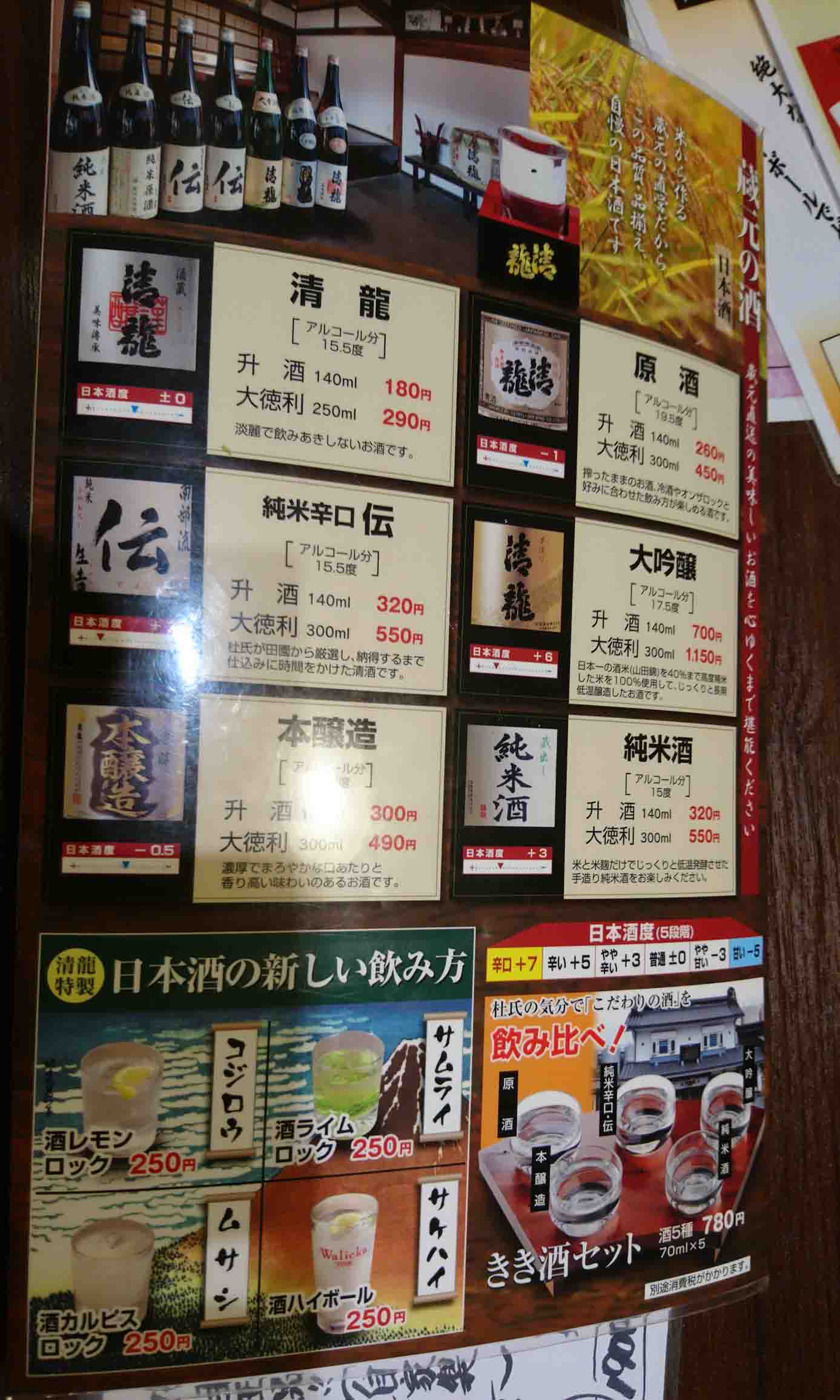
As you imagin, they had only “Seiryu” because it was a restaurant run by “Seiryu Shuzo”.
Maybe because it was run by the brewery directly, the prices were low!
I ordered,
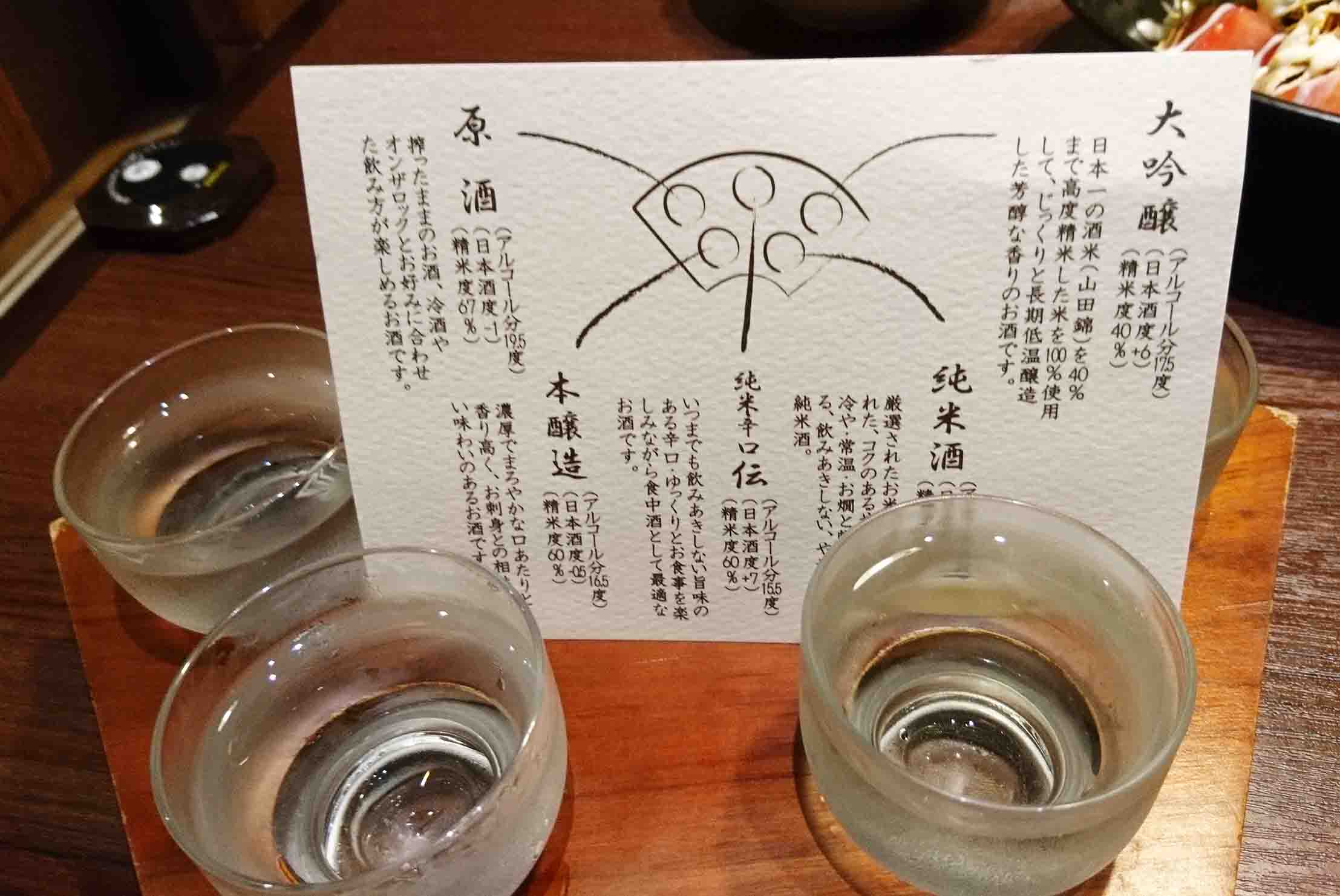
Sake tasting set.
It was a reasonable set of different kinds of “Seiryu” except Futsushu (name of a type of sake. Please refer to here, to know more about “type of sake”).
I could enjoy various sake of just enough amounts.
The paper in the middle is the brief explanation of each sake.
I’m a type of person who eats the favorite at last.
I decided to leave Daiginjo (another type of sake, classified as the upper class), and started it with “Honjozo”.
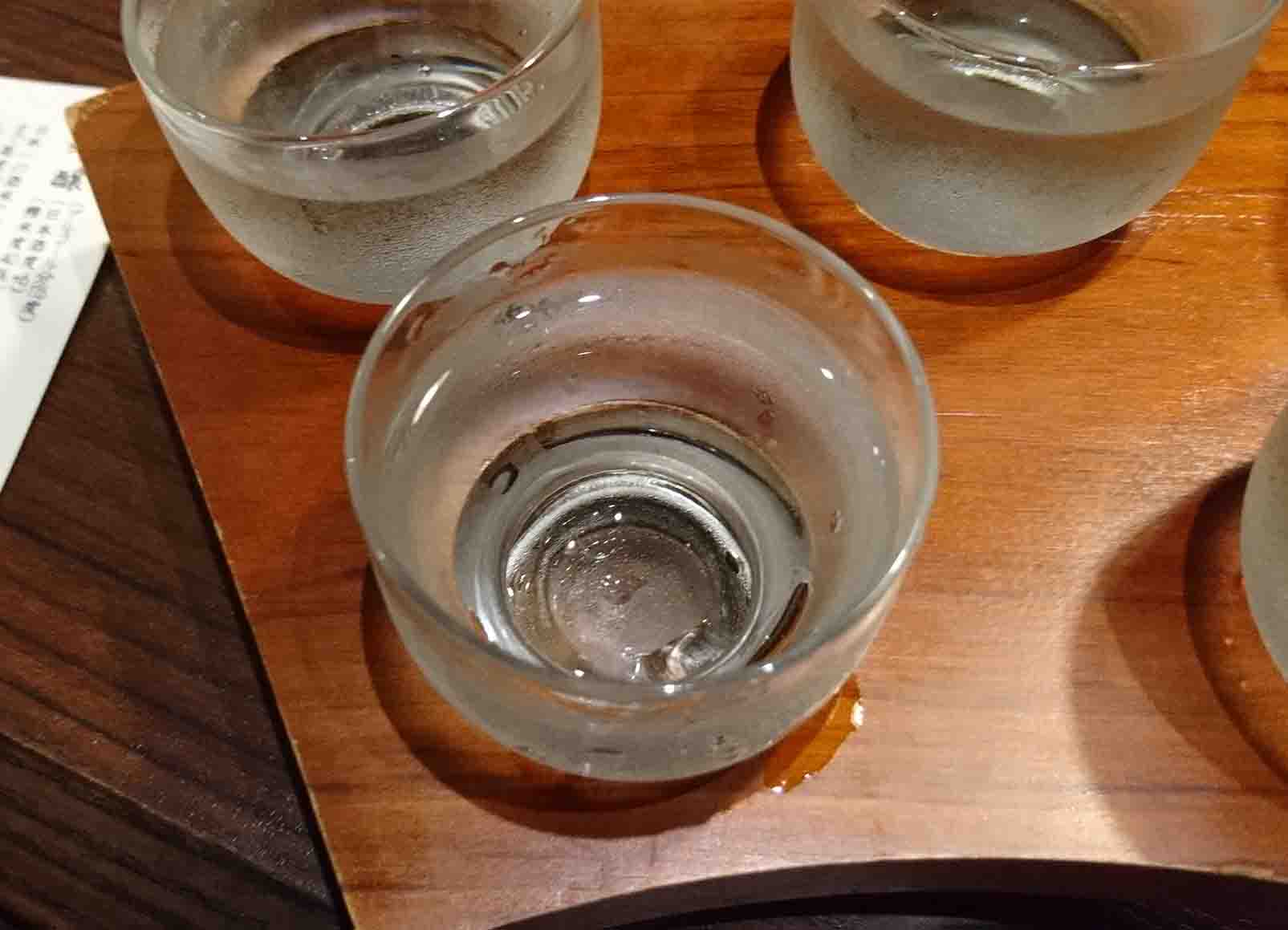
It had good sake flavor.
The taste was sweet, not too rich, but light.
The next one I tried was “Junmaishu”.
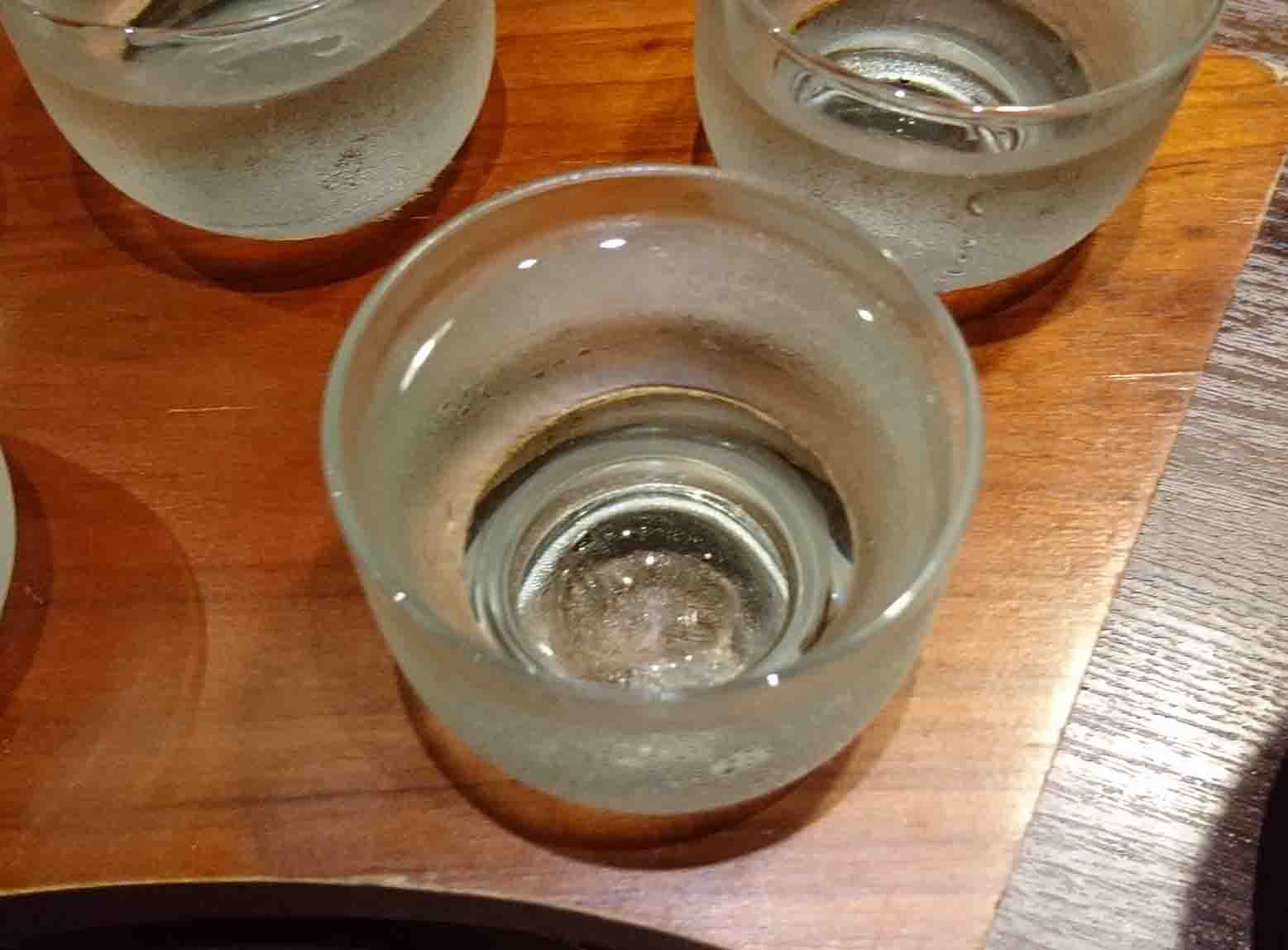
It looked same as Honjozo.
However, the taste was different.
The taste was light and dry.
The next was “Genshu”.
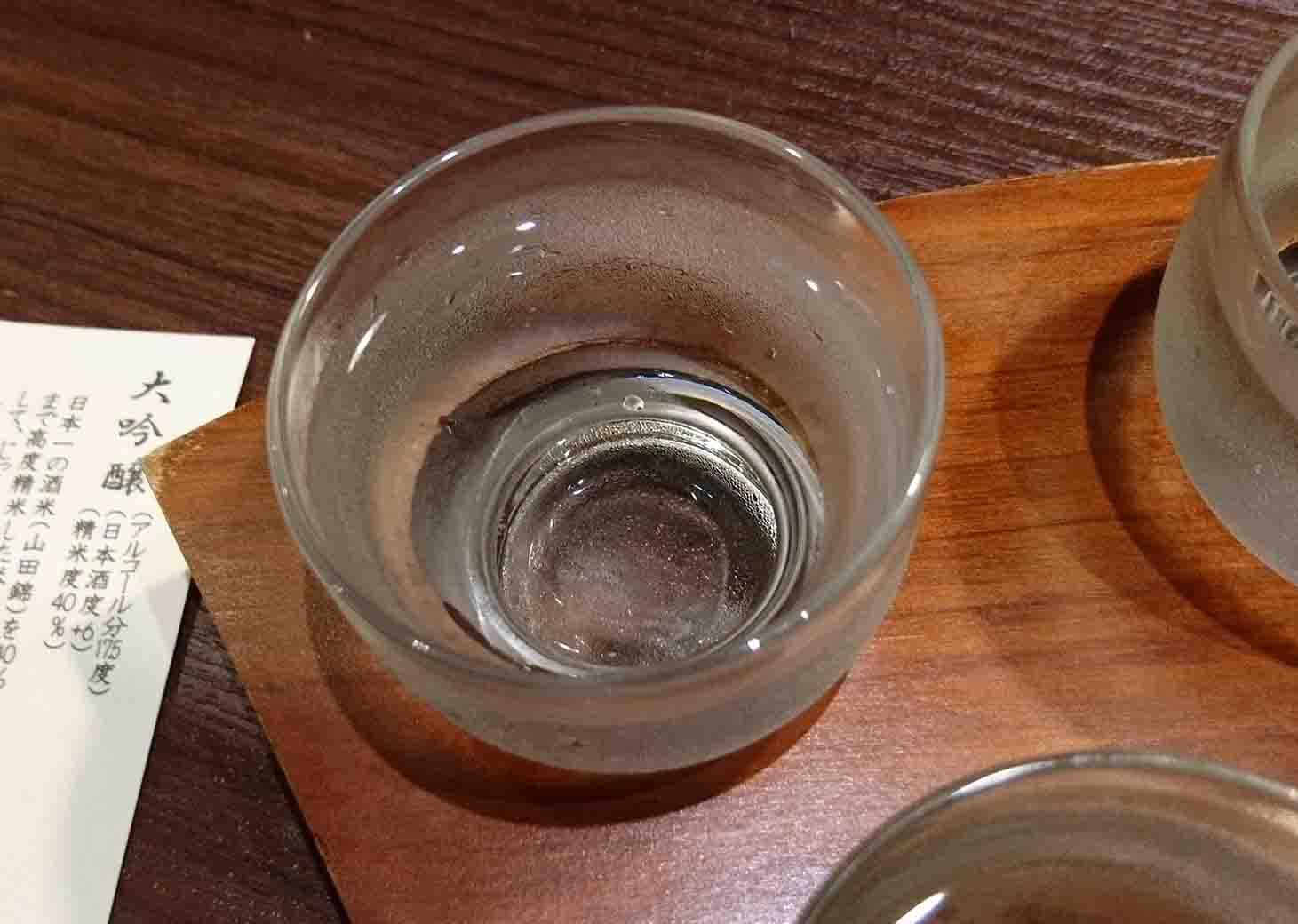
The explanation sheet didn’t mention, but it was “Genshu” (raw sake, no water or other ingredients added) of Futsushu.
The Nihonshu-do (a numeric value to express the sake’s sweetness/dryness) of this Genshu was “-1”, so it was meant to be “sweet”.
However, I felt that it was dry with rich flavor.
I felt deep and various tastes from this sake probably because it was Genshu which is the very first liquid of making sake.
The next was “Junmai Karakuchi ‘Den’”.

This one was just like its name.
The taste was dry and clear, not like Genshu, with various tastes.
The aftertaste was refreshing but it also had rich sake flavor.
The next was finally “Daiginjo”.
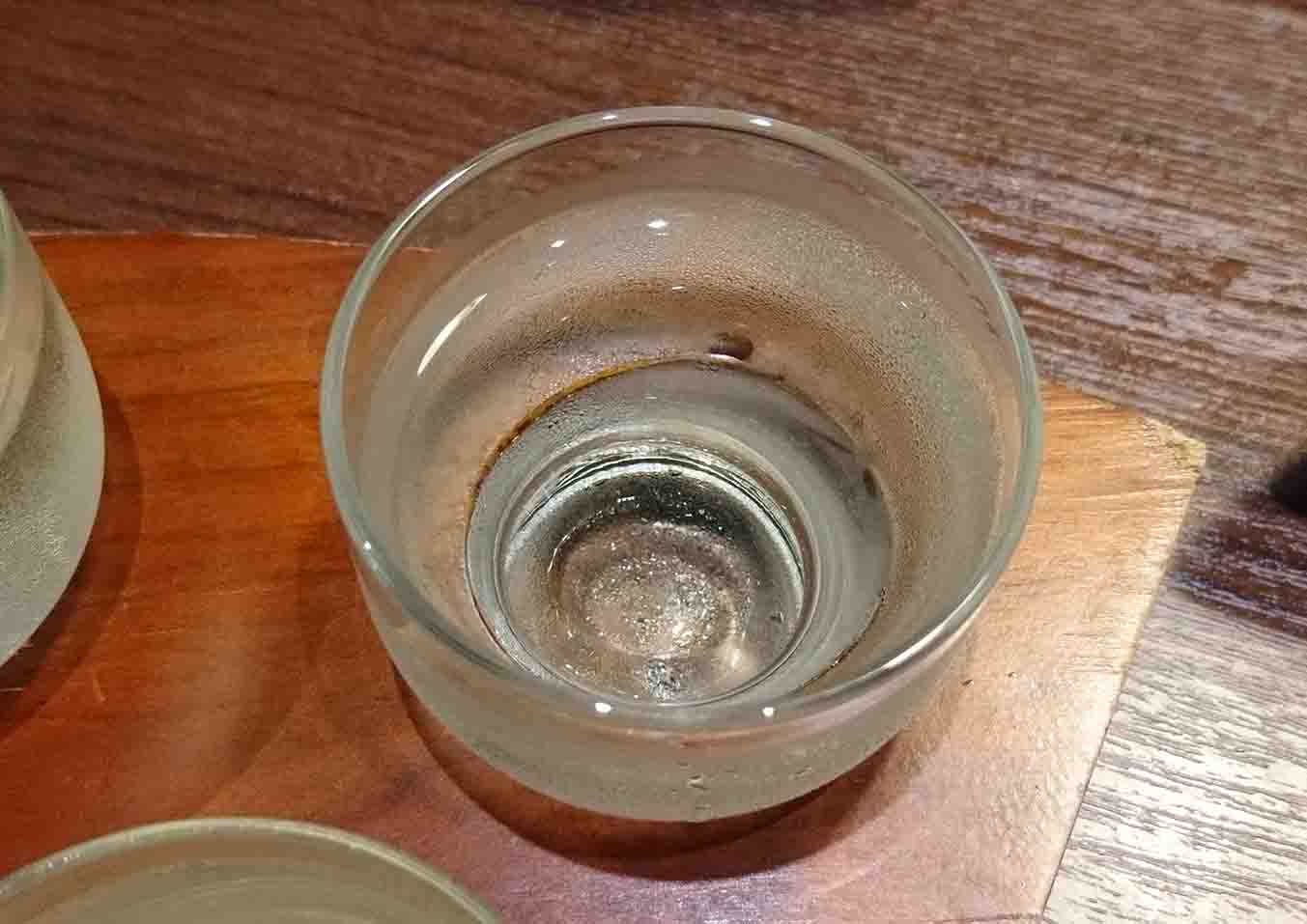
It was sweet like fruits, but the aftertaste was very light.
It was a kind of sake which I like.
Honjozo and Junmaishu were also good, of course, but the best one for me was Daiginjo.
It matched my taste.
The combination of “Seiryu” and foods
While I was enjoying the sake half-listening my friend’s talk(sorry><), the foods we ordered arrived one after another.
Seafood nuta
The first one was “seafood nuta”.
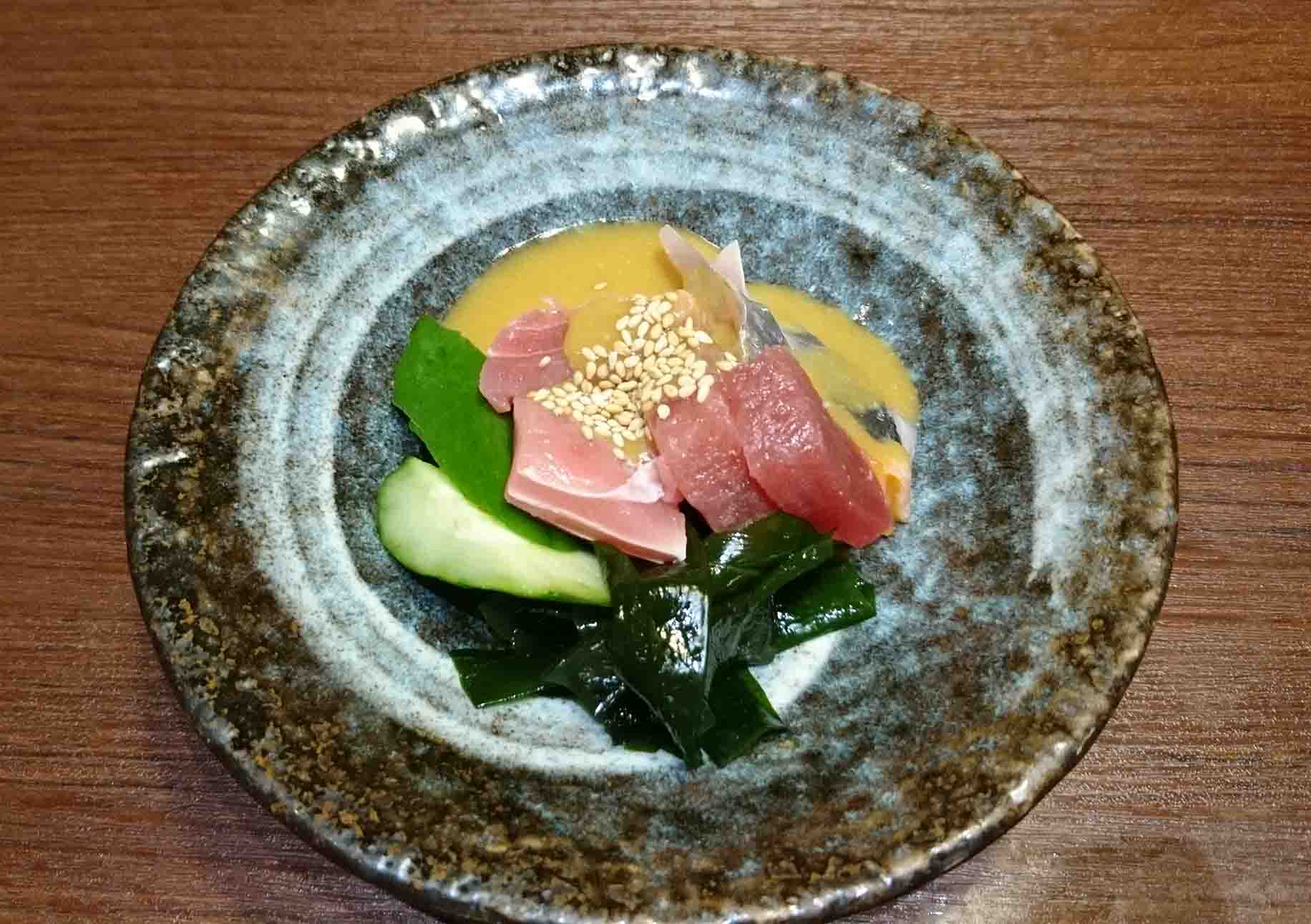
“Nuta” is a dish which is seasoned with a sauce of miso and vinegar.
The ingredients were wakame seaweed, cucumber, tuna, and mackerel.
I tried pieces of the ingredients with plenty of the miso vinegar sauce, and then sipped “Junmai Karakuchi Den”.
This light and dry sake refreshed my mouth filled with thick taste of miso and vinegar.
I also tried it with “Daiginjo”.
The fruity sweetness became bigger with the miso vinegar sauce.
It became another kind of sweetness which was clearly sweet but light, just like a watermelon.
Seiryu salad & Sashimi plate
The next one was,
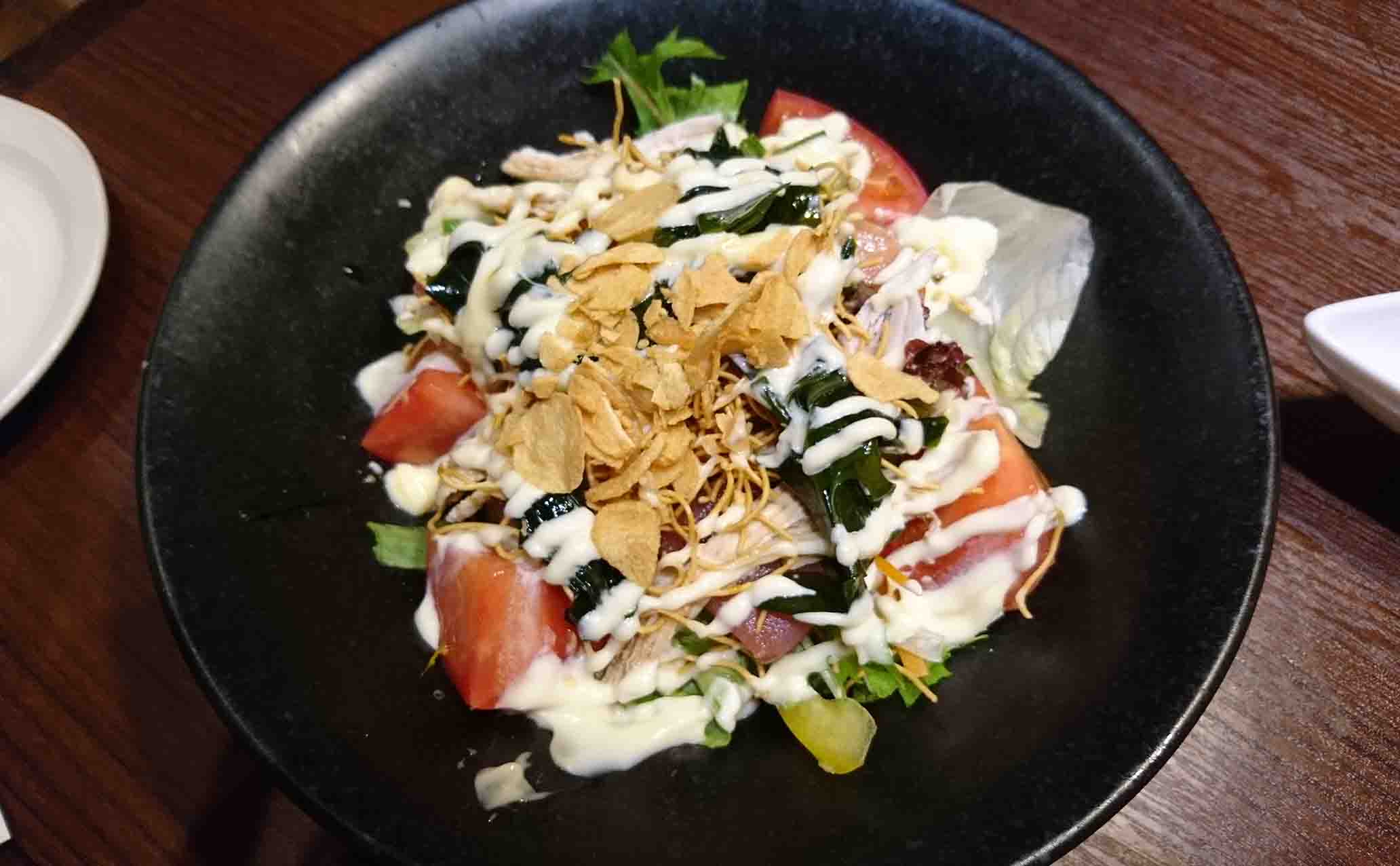
“Seiryu salad”.
It was a salad with some sashimi pieces on the top.
The price was only 480 yen!
This one next was a plate of various sashimi (Sashimori), 1100 yen.

The fish was well balanced in the freshness and the flavor.
I tried it with sweet “Honjozo” and “Daiginjo”. The rich tastes of both sashimi and sake matched well.
I felt that the sweetness became bigger.
On the other hand, when I had it with dry “Junmaishu”, “Genshu”, and “Junmai Karakuchi Den”, the sake didn’t change the taste of sashimi.
Which to choose depends on the person’s taste, but I personally thought that dry sake was better to enjoy the sashimi’s delicate taste.
Kara-age
The next was the one which I always order at Izakaya restaurants, Kara-age (Japanese deep fried chicken).
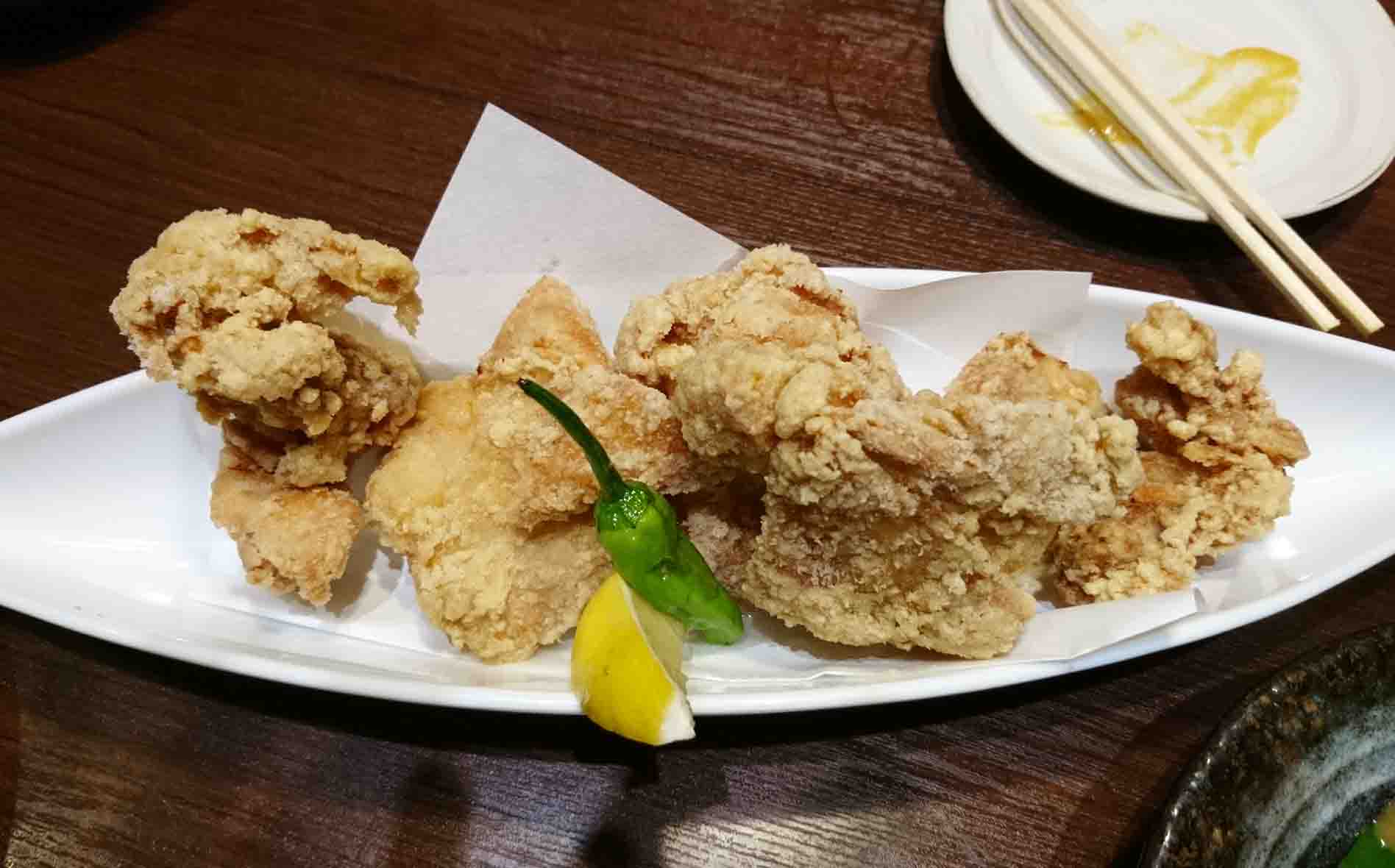
This Kara-age’s coating was crispy and light.
It tasted a little weak at first, but when I sprinkled lemon juice on it, the chicken’s flavor became clear with the juice.
The Kara-age’s flavor and the light texture matched the sake very well.
The dry “Junmaishu”, “Genshu”, and “Junmai Karakuchi Den” refreshed my mouth after eating Kara-age.
Well, how about the sweet “Honjozo” and “Daiginjo”?
“Honjozo” didn’t disturb the Kara-age’s taste, and Kara-age didn’t change the sake at all either.
For “Daiginjo”, as well as “Honjozo”, its sweet flavor with light aftertaste didn’t get influenced by the chicken’s oil, and each flavor went through my throat together.
After I enjoyed the sake tasting, I took Masuzake (sake served in a small wooden box) of “Seishu Seiryu”.
This sake was sweet.
It’s classified in “Futsushu”, but it had richer flavor than other many Futsushu, and the sweetness was not too much.
I tried the sake with Kushimori (a set of various grilled foods on sticks) pork and chicken.
I felt that the sake wrapped the flavor of the meat softly in my mouth.
It’s a strong point of the restaurant run by a sake brewery that they can serve a box of such a good sake for only 180 yen!
Conclusion
The friend I went with works for a company which designs and constructs restaurants.
He was interested in the interior design of restaurants, so we left this after 2 hours to visit more shops.
“Kuramoto Izakaya Seiryu” had more food menus including noodles and rice dishes for after drinking.
There were also more drink menus such as sake cocktails, shochu (Japanese distilled white liquor) made by Seiryu Shuzo, wine, and whisky.
They had so many menus to entertain the visitors, so the customers can enjoy the night only at this restaurant for a long time.
I wrote about the sake tasting of different “Junmai Ginjo” sake made with different types of rice in the article about “Mr. Happy”.
This time I enjoyed various sake made by one brewery.
It’s difficult to express the differences accurately with my writing, but I learnt that sake becomes so much different depending on the types of brewing method, ingredients etc. even though they are all made by the same brewery.
The foods are also very nice, so I recommend you this restaurant to enjoy the characteristics of sake more deeply!
It's our great pleasure if this article is helpful for you.
Restaurant Information
| Shop Name | |
|---|---|
| Prefectures | - |
| Tel | |
| Address | |
| Nearest Station | |
| Homepage | - |
| Business Hours | - |
| Holiday | |
| Introduction | |
| Sake List |
|

